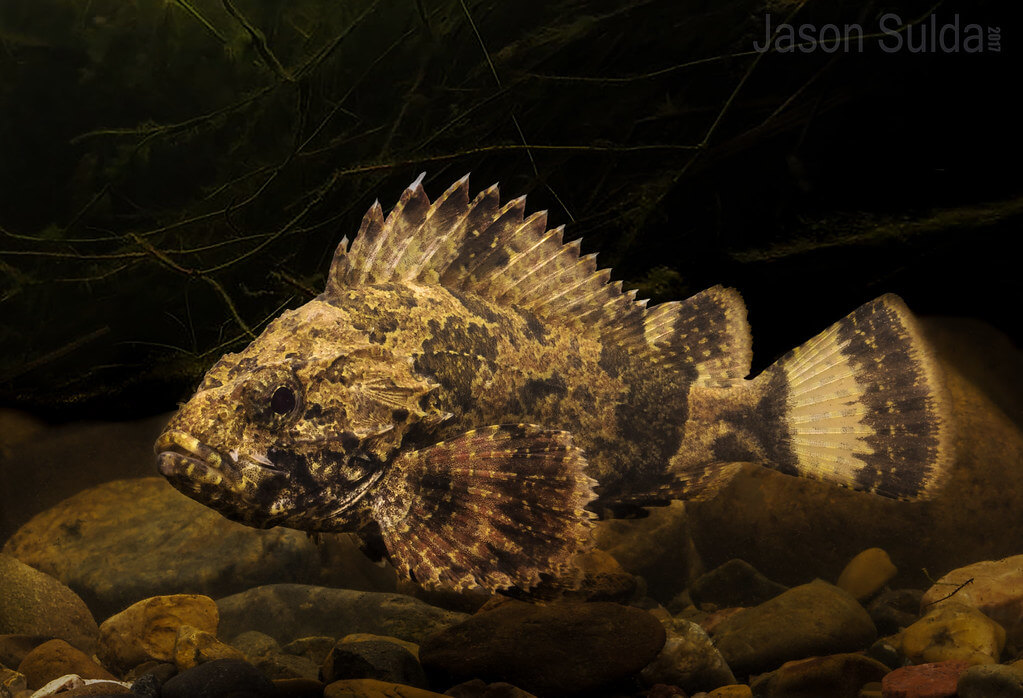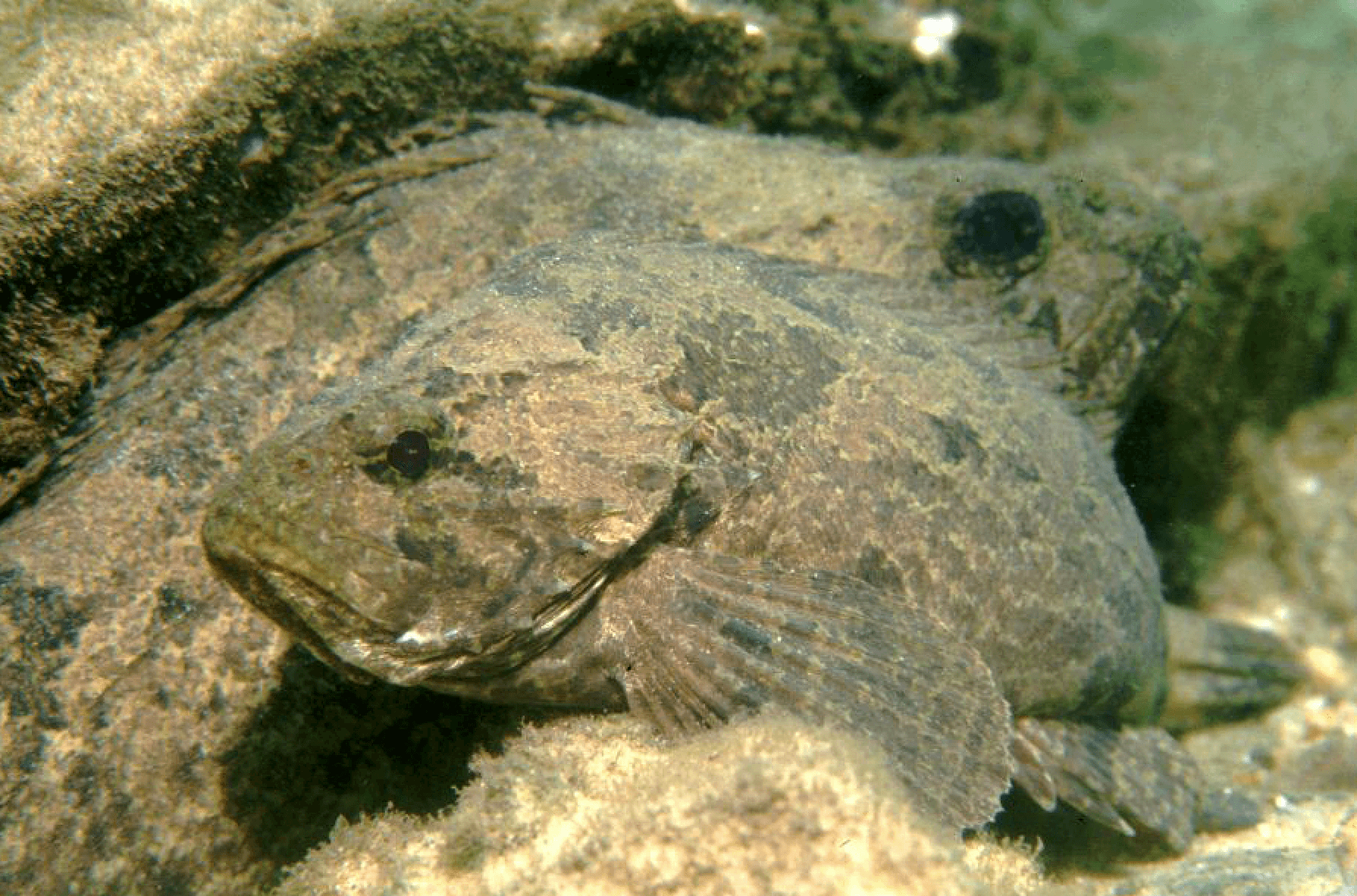The Bullrout (Notesthes robusta), also commonly called Freshwater Stonefish or Kroki, is a pale yellowish to dark-brown coloured fish that lives in tidal estuaries and slow-flowing streams in eastern Australia, like the Nepean river, from Southern NSW to northern Qld. Its spines are venomous. It has 13 dorsal soft rays, 11 anal soft rays and its spines have venom glands on them that can be lethal if injected into the bloodstream of humans or larger animals like dogs or cats.
A puncture wound from one of these spines is EXCRUCIATINGLY PAINFUL.
Introduction to the bullrout
The Bullrout is an ugly but deadly fish that lives in tidal estuaries and slow-flowing streams in eastern Australia, like the Nepean and Hawkesbury rivers. Its spines are venomous, and it can grow up to 60 cm in length. The Bullrout is a bottom-dwelling fish, and its diet consists mainly of small crustaceans and insects. It swims by sweeping its head from side to side and sucking in prey when it brushes against it with their tentacles on their snouts. It feeds at night, or if there is little food available during the day.
Why should you be wary of bullrouts?
Its spines are venomous, and it can grow up to 60 cm long. If you are unlucky enough to be stung by one of its spines, you will experience severe pain, swelling, and nausea. In some cases, the venom can even cause paralysis or death.
So if you’re swimming in Australian waters, be sure to keep an eye out for this dangerous creature! It’s always best to take a local guide with you when fishing so they can show you which species are safe to eat.
How to spot a Bullrout
It has a mottled brown body with a yellowish tinge, and its spines are venomous. The best way to spot a Bullrout is to look for its spines. If you see one, be careful! Its spines will inject the poison into you if they get too close. Bullrouts feed on crustaceans, small fish, and insects in freshwater streams. They also live in tidal estuaries and slow-flowing streams in eastern Australia.
What should you do if you step on a Bullrout
If you step on a Bullrout, the first thing you should do is to remain calm. If you panic, your heart rate will increase and the venom will spread more quickly through your body. For immediate relief of pain associated with the sting of a Bullrout, immerse the affected area in hot water.
Second, remove any clothing or jewellery that might constrict the area around the wound.
Third, wash the wound with soap and water to help prevent infection. Fourth, apply a cold compress to the area to help reduce swelling.
Finally, seek medical attention as soon as possible.


